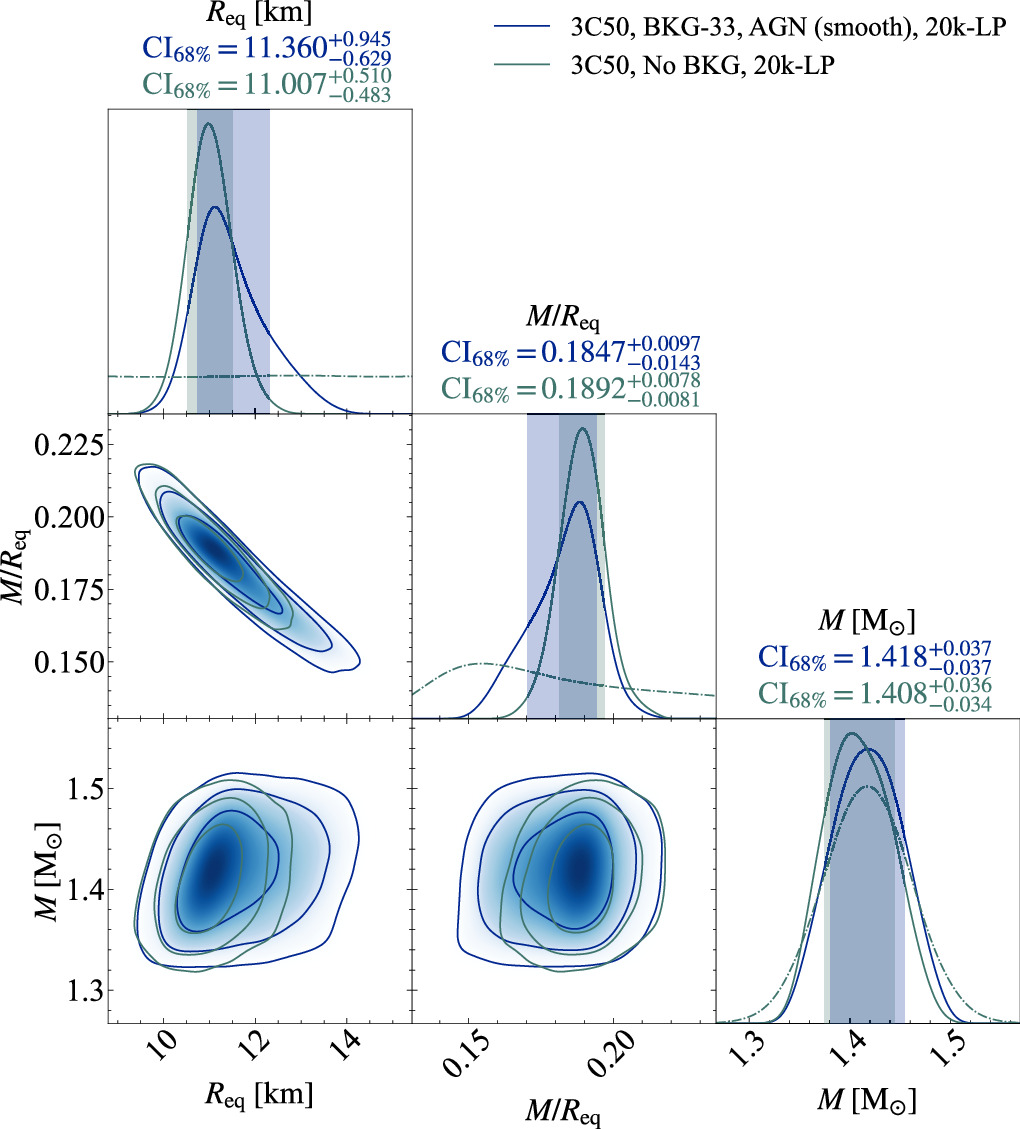NICER / ISS Science Nugget
for August 22, 2024
NICER's 3rd neutron-star radius measurement
From the time it was conceived and designed, NICER's key science goal has been to make precise and robust measurements of the radii and masses of neutron stars, which contain the densest stable matter in the universe. Beyond the reach of any terrestrial laboratory, investigating the nature of matter in this regime - just shy of collapse to a black hole, where theoretical predictions have floundered for nearly a century - requires astrophysical measurements. Constraining stellar masses and radii (M-R) informs our understanding of the constituents and behavior of dense matter, and NICER targets the best prospects for making robust measurements: a handful of nearby millisecond pulsars (MSPs), neutron stars with rapid rotation rates and relatively weak magnetic fields. NICER M-R measurements have been published previously for two MSPs, with a large number of citations reflecting the widespread impact of these results in nuclear and gravitational physics as well as astrophysics.
A peer-reviewed paper published this week in The Astrophysics Journal by D. Choudhury (Univ. of Amsterdam) and collaborators details NICER results for a third object, PSR J0437-4715, the closest and brightest known MSP. With data acquired since the start of the mission in 2017, supplemented by a precise mass measurement from pulse timing in radio waves, the team modeled J0437's X-ray pulsations, which result from "hot spots" on the neutron star's surface. These regions, thought to coincide with magnetic poles heated to millions of degrees by energetic particles raining down from the magnetosphere, are swept through our sightline by the star's rotation, with their specific locations and shapes producing a distinctive beam pattern that can be used - once modifications due to strong gravity and the star's thin but hot atmosphere are taken into account - to infer the stellar radius. The result, an equatorial radius of 11.36 km with 5-8% uncertainties, is the most precise to date. It implies that the dense matter in the star's core is somewhat softer than expected given NICER's prior results (but nonetheless consistent with them). Also in keeping with the earlier MSP studies is the fact that the inferred hot-spot geometry for J0437 departs substantially from the "textbook picture" of a simple dipolar magnetic field centered on the star: the new work suggests that the X-ray emission comes from a two-temperature spot in one hemisphere of the star and a large ring of emission girdling the spin pole on the opposite hemisphere. These results continue to drive significant theoretical work into the nature and evolution of neutron star interiors.


Left: Pulse profile of the nearby pulsar J0437-4715 acquired in a total NICER exposure of 1.3 million seconds. The top panel shows X-ray brightness across two full rotations (data repeated for clarity) of the neutron star -- which has a 5.75 millisecond spin period -- in detected photon counts averaged over all photon energies in the 0.3 to 3 keV band. The lower panel shows how the photon energies are distributed across individual NICER energy channels, each representing 0.01 keV. (Credit: Choudhury et al. 2024)
Right: A "corner plot" representing the probability distributions for neutron-star mass and radius - a subset of parameters from an extensive model that includes other stellar properties - of PSR J0437 inferred from NICER data. Two results are shown, with the headline result in blue incorporating independent information about the non-pulsar signal from cosmic background and a distant active galactic nucleus (AGN) that happens to lie close to PSR J0437 on the sky; the result in green, statistically consistent with the blue one, makes no assumptions about background emission. On the diagonal are one-dimensional constraints (with 68% confidence intervals, CI) on the star's equatorial radius, mass-to-radius ratio, and mass; the dashed curve at lower right represents an independent mass measurement made by ground-based radio telescopes. Contours in the lower left panels show correlations between pairs of parameters. (Credit: Choudhury et al. 2024)
<< Previous
Main Index
Next >>